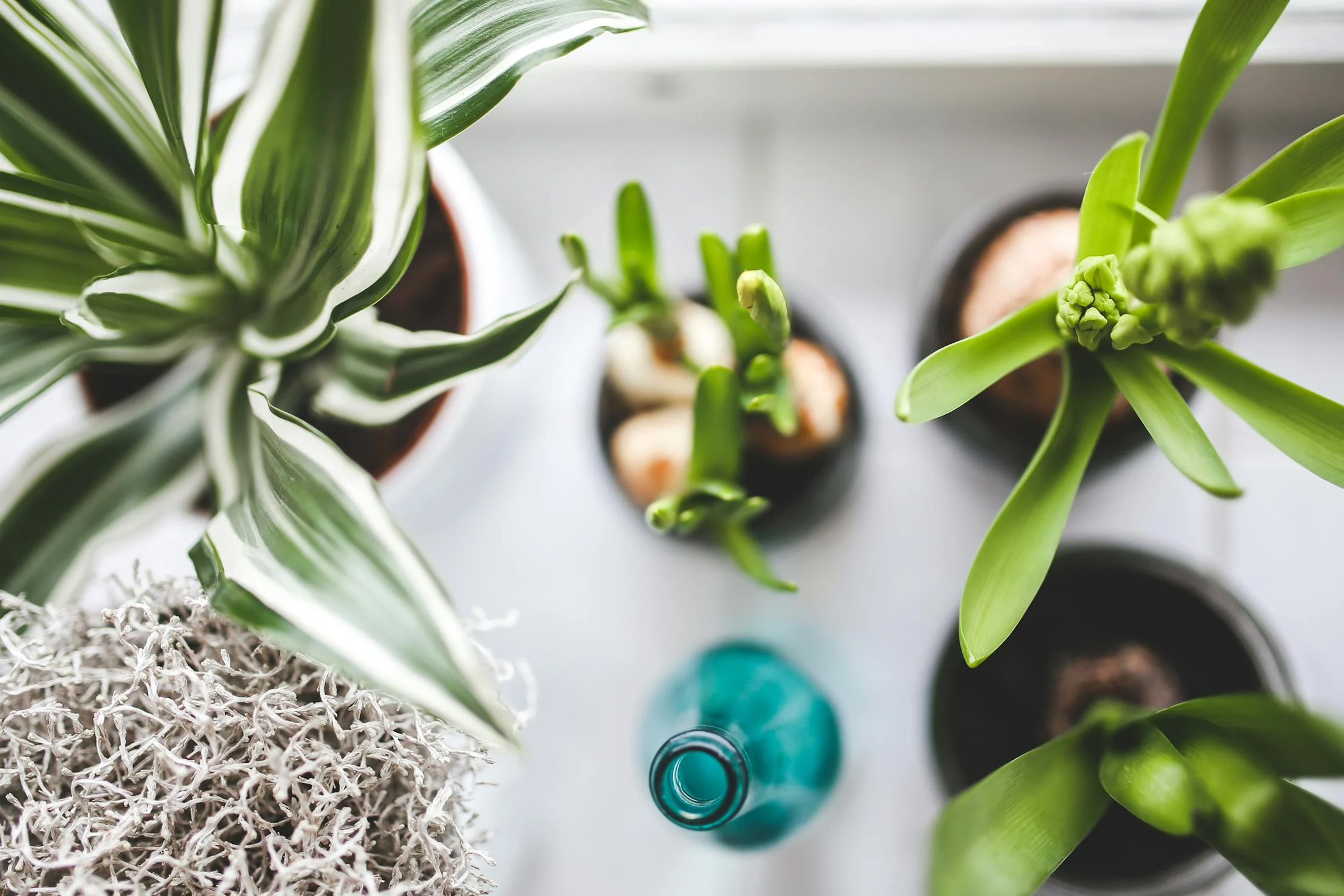Even houseplants often require varying amounts of light. The succulents on the left need over 4 hours of direct sunlight. Meanwhile, the fern on the right would be damaged by such intense light. To us, both images appear equally “bright.” However, our eyes are not accurate tools for measuring light intensity.
Light is the most important factor in choosing which plants to grow indoors. Unfortunately, our adaptable eyes work against us in this case.
Human eyes adjust extremely well to different light levels. As we move between rooms, our eyes acclimate very well to varying brightness. Too well! A desk by the window can be 10 times brighter than a workspace across the hall. Yet after a few minutes, both may appear like “bright, indirect light.”
How do we measure light?
Light is measured in specific units, like distance is measured in inches or meters. Common light units include: foot-candles, lux, candela and lumens. A foot candle is a measurement unit for light intensity, abbreviated as ftc. One foot-candle approximates the brightness of a candle flame one foot away.
Even in winter, outdoor light at noon can surpass 4000 ftc. But in a north facing window, it may never reach even 400 ftc. With just fluorescent bulbs, indoor light is often below 40 ftc. Remarkably, we see well in all three settings after just minutes of adjustment. Our eyes readily adapt.
Terms like “low light” or “bright indirect light” can be vague. Our eyes’ adaptability makes comparing light levels difficult, especially indoors where differences are subtle.
Measuring light indoors
To accurately measure light, use a digital light meter. Expensive models for research or photography are unnecessary. If your meter displays foot-candles or lux and is accurate to 1 ftc, it will suffice for houseplants. There are also a few phone apps out there that can also approximate light levels, but their accuracy varies.
Measure at different times of day for a greater sample size and to zero in on peak intensity.
Below are general indoor light level guidelines at mid-day:
25-100 ftc – Low light, far from windows or heavily shaded.
100-500 ftc – Moderate light, near north facing or shaded east/west windows.
500-1000 ftc – High light, near unshaded east/west windows or shaded south windows.
Over 1000 ftc – Direct sunlight through unshaded glass.
What plants can I grow indoors?
What plants you can grow depends on several factors, but light is hardest to adjust. Even indoors, choose the right plant for the location.
With scarce sunlight, you can install grow lights or choose plants suited to the light available. An included table estimates light and water needs for popular houseplants. Fluorescent and LED lights work best as grow lights. Incandescent bulbs are inefficient, hot and expensive for prolonged use.
Contact your county Extension office for more on houseplants or grow lights.
Match houseplants to foot candles
The intensity measurement for growing plants indoors ranges from 100 to about 800 FC.
LOW LIGHT
100-200 Foot Candles
Low-light sources: Areas of the home that are far from windows, or near windows in heavily shaded outdoor areas. Low light may also be from overhead indoor lights. Note: some plants do well in a range of light conditions, so they will appear in several light requirement lists.
Houseplants that grow in low light:
Bamboo Palm
Kentia Palm
Monstera
Peace Lily
Philodendron
Pothos
Snake Plant
ZZ Plant
MEDIUM LIGHT
200-400 Foot Candles
Medium-light sources: Areas near windows but that receive no direct sunlight. These indoor areas are generally in unshaded north-facing windows or shaded east- or west-facing windows.
Houseplants that grow in medium light:
Peperomia (in photo)
Pilea
Asparagus Fern
Bromeliad
Chinese Evergreen
Christmas Cactus
Corn Plant
False Aralia
Dracaena
Monstera
Orchid
Philodendron
Pothos
Prayer Plant
Rubber Plant
Snake Plant
Spider Plant
Tradescantia
ZZ Plant
Calathea
Lady Palm
Maidenhair Fern
Peace Lily
Staghorn Fern
Zebra Plant
HIGH LIGHT
400-800 Foot Candles
High-light sources: Areas near windows with some direct light softened by a shade or curtain from the inside of the house or foliage on the outside of the house. High light is generally found near unshaded east- or west-facing windows or shaded south-facing windows.
Houseplants that grow in high light:
Jade Plant
Peperomia
Succulents
Hoya
Air Plants
Christmas Cactus
Corn Plant
Kalanchoe
Norfolk Island Pine
Philodendron
Pilea
Pothos
Prayer Plant
Snake Plant
Spider Plant
Tradescantia
ZZ Plant
Q&A – artificial lighting for indoor plants
Q: Is it possible to cultivate plants solely under artificial illumination?
A: Yes, it is feasible. Plants require light to convert carbon dioxide and water into sugars that enable their growth. Provided the light source is suitable, many plants are unable to discern whether the light is natural or artificial. See the questions below for information on which light sources are appropriate for plants.
For some plants, the duration of exposure to the light source will either promote or inhibit flowering. It is important to research your specific plant’s light requirements.
Q: Does the type of light bulb matter?
A: To some extent, yes. Plants can be cultivated under various light sources, however some are more effective than others. Below are the three most commonly used options.
Incandescent bulbs are not recommended.


Hi, this is a comment.
To get started with moderating, editing, and deleting comments, please visit the Comments screen in the dashboard.
Commenter avatars come from Gravatar.